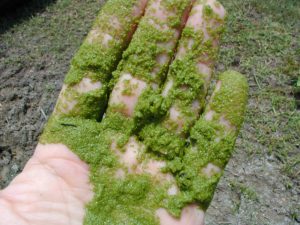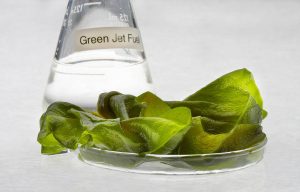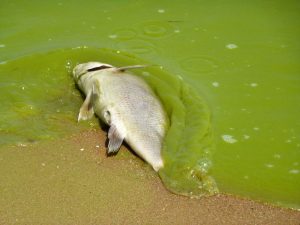Have you ever wondered what that green stuff is that you find floating in bodies of water? What about that slimy mass engulfing your aquarium? It’s algae. Yes – we are talking about algae. As icky as algae may seem, it serves a variety of useful purposes.
What is it?

Fossil records indicate that algae may have been around for more than 475 million years. They are intriguing and diverse organisms that are difficult to sort definitively into either plants or animals.
They come in a range of sizes – from microscopic unicellular species like Chlorella to massive multicellular forms like the Giant Kelp – which can grow to more than 100 ft. in length. They aren’t always green either. Microalgae can be found in red, brown, and cyan colors. They thrive in both freshwater and saltwater environments, but aren’t solely bound to aquatic environments. Algae has been found on tree trunks, snow banks, in soil, and hot springs.
Most algal species are capable of generating their own food through photosynthesis (converting sunlight into fuel for the organism). In addition to light energy, other factors that influence algal growth include:
- carbon dioxide,
- nutrients like phosphorous and nitrogen,
- optimum temperature (a range of 16 – 35 degree Celsius depending upon the species)
Some algal species are heterotrophs- they depend on nutrition derived completely from external sources.
Uses
Algae use photosynthesis to pull carbon dioxide from the atmosphere to create oxygen, and they’re responsible for generating about 50% of the Earth’s oxygen.
Algae hold great promise for bio fuel. They provide a strong alternative to fossil fuels- since they can produce energy rich oils. The carbon dioxide they consume during photosynthesis is released back into the atmosphere when it is burned as fuel. In effect, algal fuels are not releasing additional carbon dioxide into the atmosphere.
Algae can be used as fertilizer, cattle feed, and soil conditioners.
They have nutritional importance as well since they’re a rich source of many vitamins and other micro nutrients. Some algal varieties are high in long chain essential omega 3 fatty acids. These varieties are preferred by vegetarians and vegans since fish oil is the only alternative source for that nutrient.
Algae can be used to treat sewage, eliminating the need for toxic chemicals in the treatment process. They can also be used to capture fertilizers from farm runoff, then be used as a fertilizer itself.

Algal Blooms
Algal blooms occur when algae undergo unrestrained growth. This happens when there is a surplus of nutrients like phosphates and nitrates in their environment. These nutrients are released through artificial sources like sewage discharge. When algae die, the decomposition process of its organic matter takes up the dissolved oxygen from the water. This causes the water’s oxygen level to become dangerously low. This can lead to large scale death of aquatic life.
The negative effects algal blooms have on their environment has given algae a bad reputation. This is short sighted since the actual cause of algal blooms is man-made: the improper treatment of effluents.

Algae are actually essential to the ecosystem. They provide oxygen for the atmosphere, a source of nutrition, food for aquatic life, fertilizer, and many other benefits which are being explored and exploited. Many organizations are making progress in their efforts to unlock the economic potential of algae.
References: